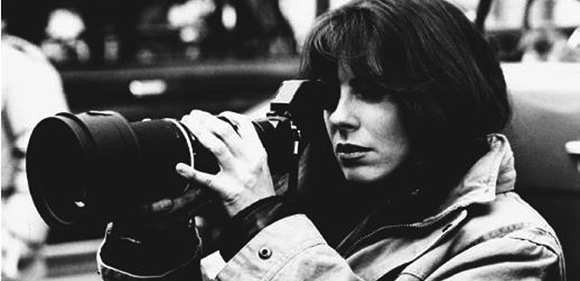Are You a Female Who Wants to Make Movies? You’ll Have Better Luck If You Stay Out of Hollywood.
Oh Hollywood

We know (though some choose to ignore) that there’s some heavy-duty gender inequality going on behind the scenes in movies and TV. But a new study conducted by the Sundance Film Institute and Women in Film Los Angeles has found that female filmmakers have it better in the world of indie film than in Hollywood. Not great, mind you. But better.
Writes the New York Times:
Between 2002 and 2012, nearly a quarter of the directors at [the] Sundance [Film Festival] were women, compared with 4.4 percent for the top 100 box office films in the same period. Including cinematographers, editors, producers and writers, women accounted for 29.8 percent of the American films at Sundance, which has become synonymous with indie film. Films directed by women were also more likely to have women in other key roles behind the camera. And breaking it down further, documentaries were rife with female talent – 34.5 percent were directed by women, compared with 16.9 percent for feature films.
The study also found that there are more producers who are female than with any other behind-the-scenes job, though “as the prestige of the producing post increased, the percentage of female participation decreased.” Oh, goodie.
Reasons cited for the gender gap include “gendered financial barriers,” “male-dominated industry networking,” “stereotyping on set, exclusionary hiring and work-family balance.”
I don’t put that much weight on the specific percentages the study’s come up with (Sundance is only one film festival, albeit a prestigious one, and sometimes I think it’s not as representative of indie film as it presents itself) but the basic idea behind the stats is sound. Ask your average moviegoer for the name of a Hollywood director who’s also female, and you’ll hear back Kathryn Bigelow, and maybe Sofia Coppola, too. But when talking about indie films, female names, both veterans and newbies, pop up much more frequently: Nicole Holofcener, Sarah Polley, Julie Delpy, Ondi Timoner, and Jane Campion, just to name a few.
I’m going to take an educated guess as to the reason for that. Making an indie film is already, generally speaking, hellaciously difficult. So it tracks for me that gender stereotypes, though still keenly felt, would be less limiting than with studio films, where the filmmakers don’t already have to fight tooth and nail every step of the way. (I should state that this is just an assumption on my part, and I’d be very interested in reading a study on why there are more females in indie film.)
With this year being a landmark one for female directors at Sundance—half the films in the U.S. Dramatic Competition section were directed by women—we are heading in the right direction, though, as Women in Film president Cathy Schulman points out, the increase in numbers among indie films “also highlights the work that is still to be done for women to achieve equal footing in the field.”
(via: Variety)
Are you following The Mary Sue on Twitter, Facebook, Tumblr, Pinterest, & Google +?
Have a tip we should know? tips@themarysue.com